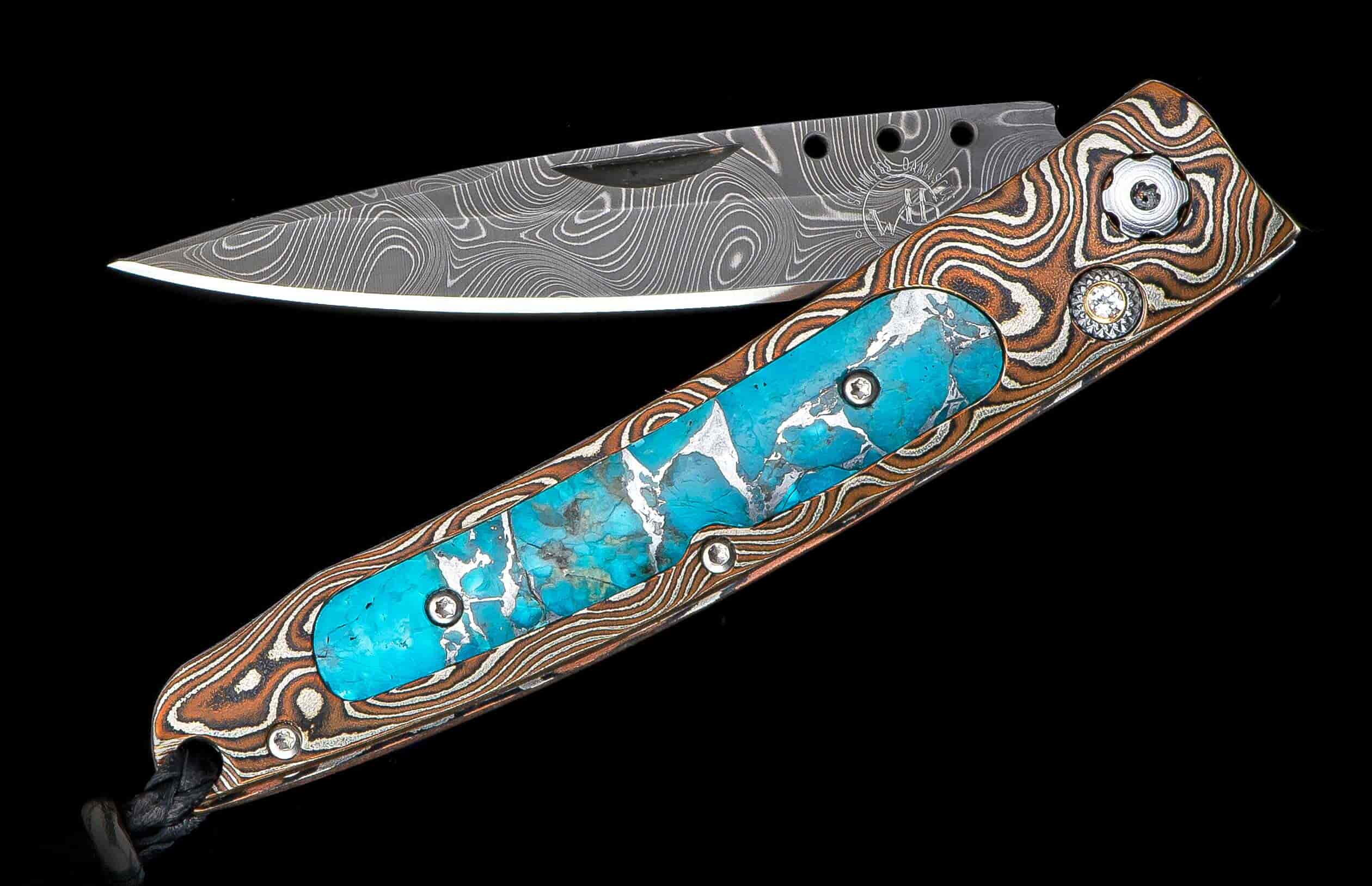Product Details
The Ventana ‘Cave Creek’ features a beautiful frame in Mike Sakmar's 'Raindrop' Mokume Gane (the ancient forging technique once used to decorate the hilts of Samurai swords), inlaid with 'Zinc Matrix' Kingman turquoise. The blade is hand-forged 'Typhoon' damascus by Rob Thomas; the button lock is set with a white topaz gemstone. The Ventana folding knife is our homage to the classic gentlemen’s pocket knives of a bygone era. The picture-window cutouts in the frame reveal the rare and exotic inlays that are one of the hallmarks of William Henry’s collections. The 'Cave Creek’ features a perfect synthesis of artistry, function, rare and exotic materials; a distinctive personality statement to be worn and used for a lifetime.Product SKU: B06 CAVE CREEK
Features & Specs
- Two hand button lock
- Dimensions:
Blade 2.50" (63.5mm)
Handle 3.13" (79.5mm)
Overall open 5.60" (142.2mm)
The Cave Creek includes a soft leather clip case for easy carry, and ships in an elegant wood presentation box




